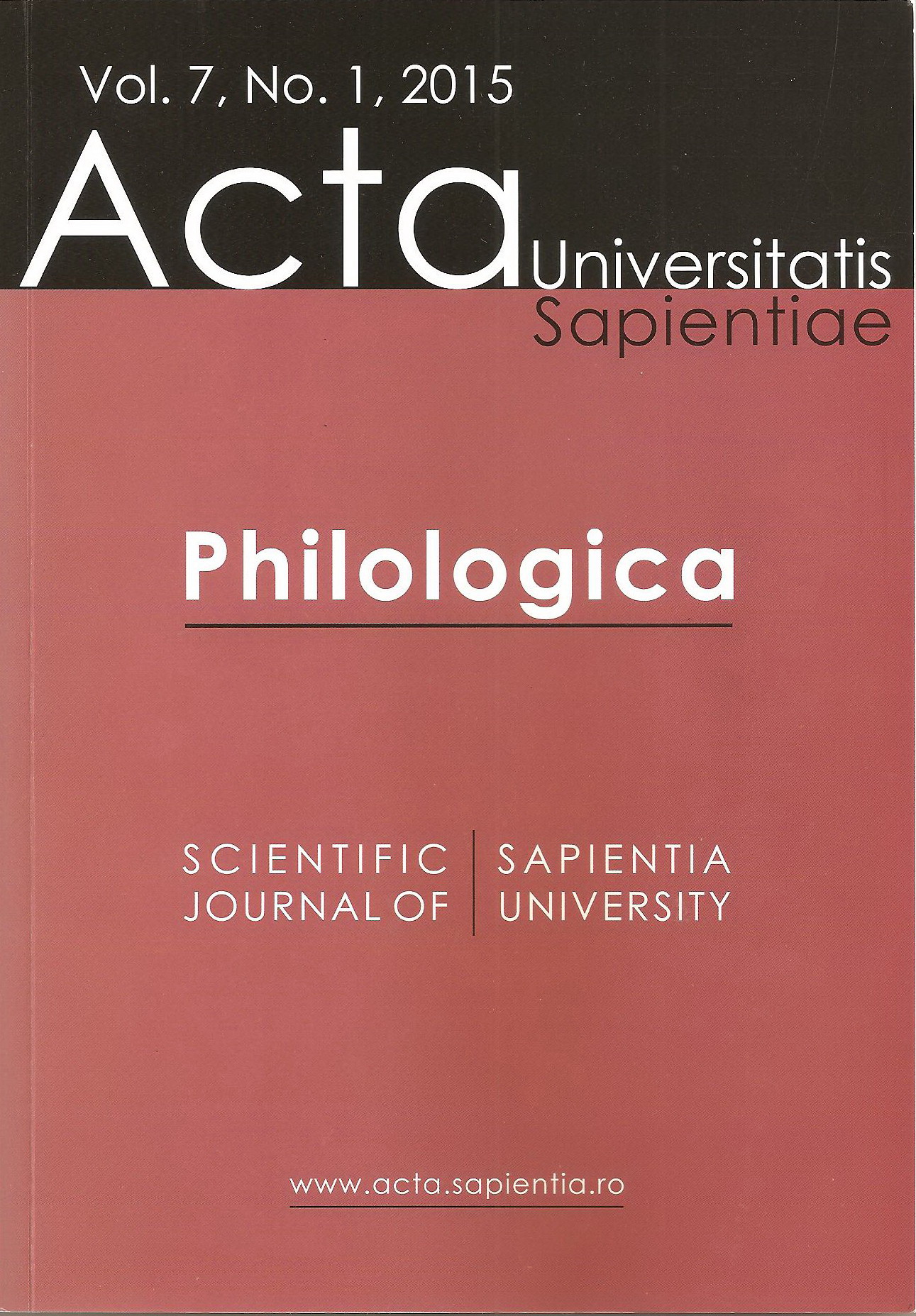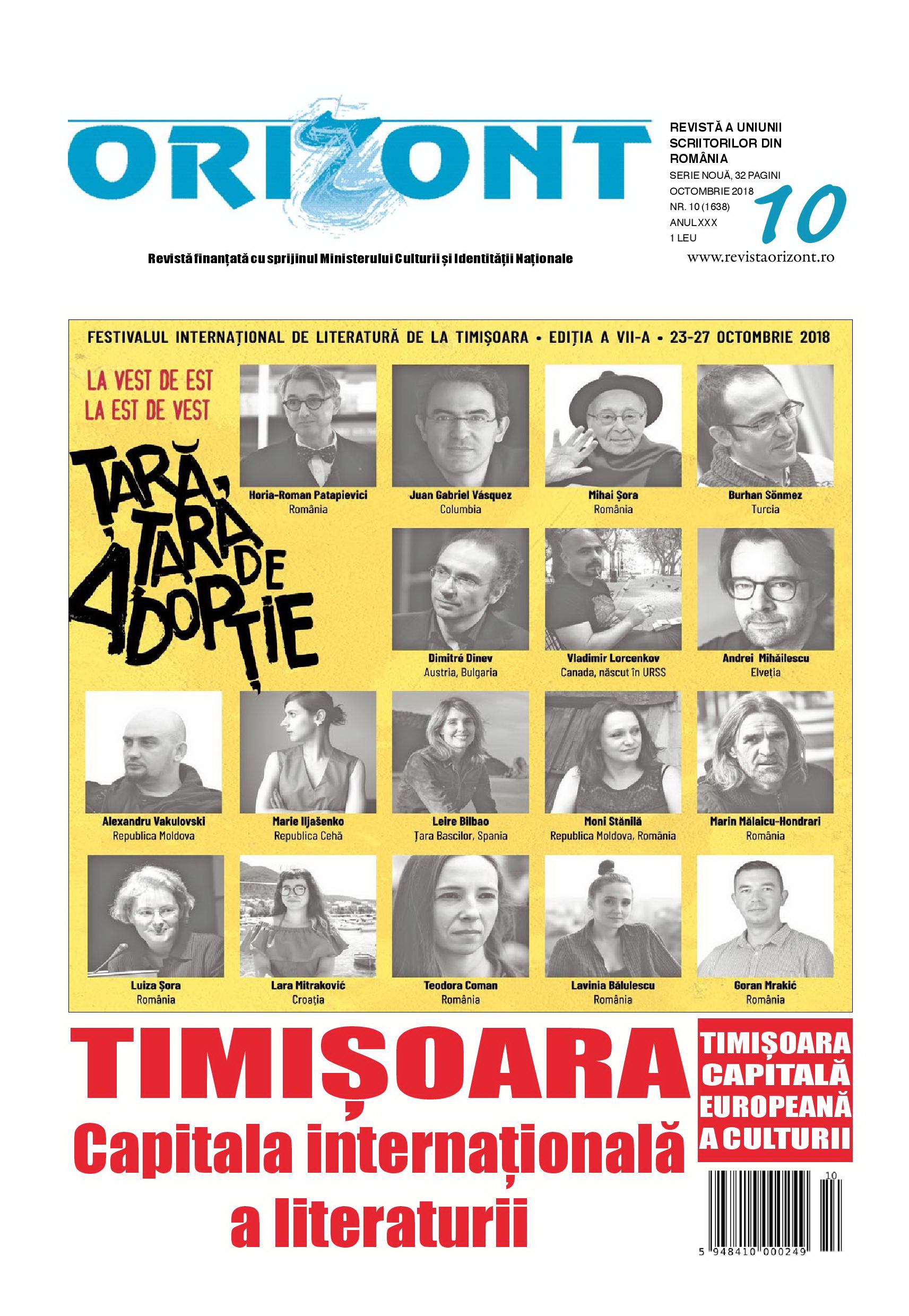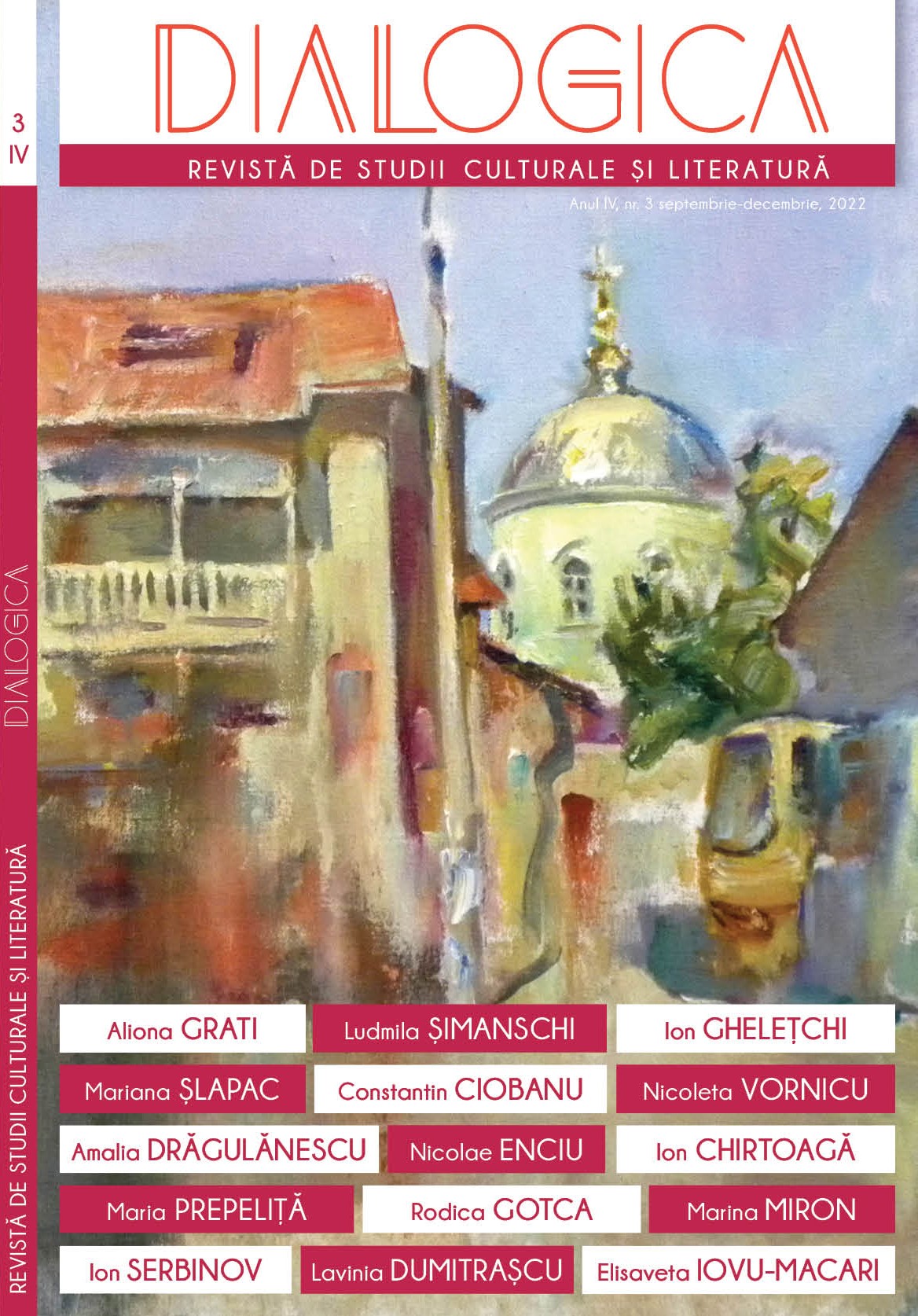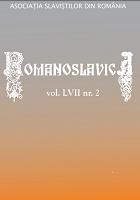
The aim of the present article is the accentuation of the tenet, accepted in Estonian literary history, that the revolutionary nature of the “Noor- Eesti” cultural movement “was largely born on the basis of literary influences received from outside” (Annus, Epner, Järv, Olesk, Süvalep, Velsker 2001: 162). This is grounded on two theoretical postulates.
More...
Keywords: Soviet cinematography; Eisenstein; Battleship Potemkin
Russian filmmakers Serghei Eisenstein, Lev Kuleshov, Dziga Vertov, Vsevolod Pudovkin, are the most representative directors in early period of soviet cinematography, considered a Golden Age of cinema. Their films had a great impact in the history of cinema, such as Eisenstein's "Battleship Potemkin", influencing generations of movie directors. Their creations are even now models for nowadays directors, although film techniques evolved very much since then. The article presents a general view on soviet cinema, describing context, currents and most important personalities. The last part of the article studies the work of Serghei Eisenstein and his contribution in the development of film.
More...Keywords: journalism; periodicals; writer; cultural destiny; literature
The journalism has always aroused the interest of the scientists, in various domains. Before asserting themselves on a national and even universal level, many of the writers came into contact with the publicist activity, being attached to certain periodicals and training themselves for the later activity as writers. In this way their cultural destiny was set. Mircea Eliade was one of the Romanian intellectuals who permanently collaborated to the most important Romanian cultural publications of the time.Mircea Eliade’s first attempts in the domain of the journalism date back since the years 1924-1925.In the articles written by Mircea Eliade in his adolescence and youth, he approaches a different thematic field and a diverse space, from science up to literature, and from literature to people of culture.
More...
Keywords: British East-Central Europe novel; symbol of food; Tremain; Greenblatt; capitalism; material; representation
In Rose Tremain's The Road Home, the culture clash of the British and the East-Central European is portrayed through a complex symbolism centred on images of food, consumption and waste. This literary representation may shed light on British literary auto-images, as well as hetero-images of the Eastern European immigrant. The novel's presentation of this culture shock is defined by the cultural historical and economic circumstances of the parties.
More...

Keywords: Mircea Filip Collection rare document collections; heritage book; sources of wisdom
Mircea Filip collection were integrated in the Scientific Library in 2016. It contains patrimony of great importance. The author invites readers to an exciting journey into the world of books; gathered in a life of Man; to discover together their charm and wisdom; the spirit of the characters created in different time spaces. True biblical values have today become the books on which the dedication or Ex-Libris of the author is preserved
More...

Keywords: translation methods; totalitarian discourse of translation; literal translation; implicit translation poetics; translation canon;
Requirements presented to the translators of literary classics by literary critic, literary scholar, translator and journalist Olev Jõgi in the early post-Stalinist period are discussed. This was when a massive lot of fiction as well as scientific, popular scientific, academic and other literature was translated from Russian into Estonian, but often the quality of translation left to be desired. The article is focused on the unpublished paper presented by Olev Jõgi at the translation section of the Estonian SSR Writers’ Union in February 1954. The paper represents a covert attempt to rehabilitate the translation method formerly used by Friedebert Tuglas, which had been suppressed since 1950 in the aftermath of the 8th plenum of the USSR Communist Party. The professional freedom and courage characteristic of Jõgi’s paper was obviously eloquent of the intention of the talented philologist to contrast and oppose a professional analytical approach to the totalitarian discourse of translation popular among the contemporary translators of Russian classics into Estonian. Olev Jõgi was a committed philologist, who dared to compare the incompetent semitranslators with some half-intellectual characters by Chekhov.
More...Keywords: review; Estonian literature; poems; poetry; rhetoric; sonnet;
Review of: Kristjan Haljak. Verlaine’i revolver. Tallinn: Tuum, 2018. 96 lk.
More...

Keywords: Tatiana Tolstaia; Horia-Roman Patapievici; Russia; modern man; mutations; cultural values;
After a nuclear explosion, the world has returned to Stone Age. People suffering from various mutations struggle to survive and adapt themselves to the new living conditions. In her novel, Tatiana Tolstaia presents not only the physical mutations of the new generations, but even a more problematic aspect, their “spiritual mutations”. The present work aims to draw a parallel between the world as presented in the novel, and the real situation encountered today – the lack of cultural, moral and traditional values, which represent the actual “mutations” of the modern man. Analyzing social standards and various opinions of different specialists, the present work tries to identify the conflicts and the causes which might trigger a significant spiritual loss, due to the modern man’s ignorance, superficiality and indifference.
More...
Keywords: Scientific life; Professot Gheorghe Barbă; 80 years old;
Scientific life: Profesorul Gheorghe Barbă la 80 de ani (Nicolae Roşianu)
More...
Keywords: transnational Tolstoyan movement; Bulgarian Tolstoyans; Soviet Tolstoyans; pacifist movement; War Resisters’ International; transnational solidarity
This paper explores the transnational history of Tolstoyism and religious anarchism that were part of the international pacifist movement of the 1920–1930s. For a long time this history was underestimated due to the lack of access to the main archives of the Russian Tolstoyans. With the opening up of the archives, it became possible to deepen our knowledge about the Tolstoyan pacifist movement as a primarily transnational phenomenon. Its goals and activities were initially framed to overcome state boundaries. The participants in the movement were ordinary people who can be described as non-governmental, grassroots activists. The paper traces some transnational trends of the movement on the basis of Bulgarian Tolstoyans’ periodicals and archives. It demonstrates the solidarity and broad-scale collaboration between Bulgarian and Soviet Tolstoyans in disseminating nonviolence ideas, debating the problem of nonviolent protest, as well as defending prisoners of conscience. The paper is a starting point for further research of the pacifist movement on the basis of the archives of transnational organizations and local activists.
More...Keywords: Tartu University; masters; 2011;
Tartu Ülikooli eesti ja üldkeeleteaduse instituudis kaitsti 2011. aastal 31 magistritööd. Eesti keele erialal said magistrikraadi kolm üliõpilast.
More...Keywords: review; world literature; Ene Mihkelson; Christa Wolf; remembering; concepts;
Review of: Aija Sakova-Merivee. Ausgraben und Erinnern. Denkbilder des Erinnerns und der moralischen Zeugenschaft im Werk von Ene Mihkelson und Christa Wolf. [Väljakaevamine ja mäletamine. Mälutöö ja moraalse tunnistamise mõttepildid Ene Mihkelsonija Christa Wolfl romaanides.] (Dissertationes litterarum et contemplationis comparativae Universitatis Tartuensis 13.) Tartu: Tartu Ülikooli Kirjastus, 2014. 171 lk.
More...
Keywords: Cahul; Bessarabia; architecture; town-planning; Pavel Fedorov; Stepan Mikulin; Bogdan Eitner;
The town Cahul was conceived by the Russian military engineers as a model locality for the settlement of colonists at the south of Bessarabia. It was established on the site of the Frumoasa rural settlement, in which the military governor of Bessarabia, General Pavel Fedorov, contributed to the development of this town. The first topographic and systematization plans of it were made in 1840 by the county cadastral engineer Stepan Mikulin and another cadastral engineer of the Bessarabia region, Bogdan Eitner. The plan of the county town of Cahul was examined several times at the Ministry of Internal Affairs of the Russian Empire and confirmed on February 9, 1845. This urban planning document approved by Tsar Nicholay I and the Minister of Internal Affairs Lev Perovski, was characterized by an accentuated schematization. A “revival” of the orthogonal monotony could be observed in the southwest part of the settlement. The new center of the town was made up of the Cathedral Square. In 1850, on the site of the old wooden church built in 1785, the cathedral of St. Archangels Michael and Gavriil was erected as the compositional center of the entire urban settlement, and in 1856–1858 the Lipovan church of the Protection of the Mother of God. The Bazar Square, Gostinyi Dvor Square, Hay Square and the public garden appeared in the town.
More...
Keywords: Cahul County Museum; Cahul municipality; administrative building; cultural heritage; state institutions;
The Cahul County Museum operates in an administrative building from the 19th century, having a rich historical past and of an undeniable value for the cultural heritage of Cahul, but also for the national material patrimony. The edifice was built between 1852–1857 and had initially, until the earthquake in November 1940, two floors, illustrated in two postcards from the 1920s and 1930s. The building is mentioned in George Sion’s work “Travel Souvenirs in Southern Bessarabia” published in 1857, but also in several documents from the National Archive of the Republic of Moldova: the reports of the Ismail county administrator from October 29, 1887 and September 11, 1897, and the act of evaluation of the building on October 18, 1888. Over time, the two floors host different state institutions: The Prefecture, the County Committee and the Court (during the Romanian administration period, 1857–1878); the City Hall, the Commissariat, the County Committee and the County Prison (after the re-annexation of southern Bessarabia to the Russian Empire, 1878); the Cahul County Court, the boys’ High School “P. Rumeantev” (later called “Ioan Voievod” Boys’ High School), City Hall, Command of Border Guard Troops (in the 20th century); and since 1960 until now it hosts the Cahul County Museum. Also, the building was visited by famous personalities who worked in Cahul or were passing through the Cahul lands, for example: Bogdan Petriceicu Hasdeu, Teodor Serbănescu, Dumitru Crăciunescu, King Ferdinand I.
More...
Keywords: review; Leonte Ivanov; monograph; Lipovian Russians from Romania;
Review of: Leonte Ivanov, În căutarea tărâmului izbăvitor. Schițe pentru o istorie a rușilor lipoveni din România, 2 volume, Partea I: Bucovina, Moldova și Țara Românească, Iași: Editura Doxologia, București: Editura C.L.R.L., 2021, ISBN 978-606-666-977-1.
More...